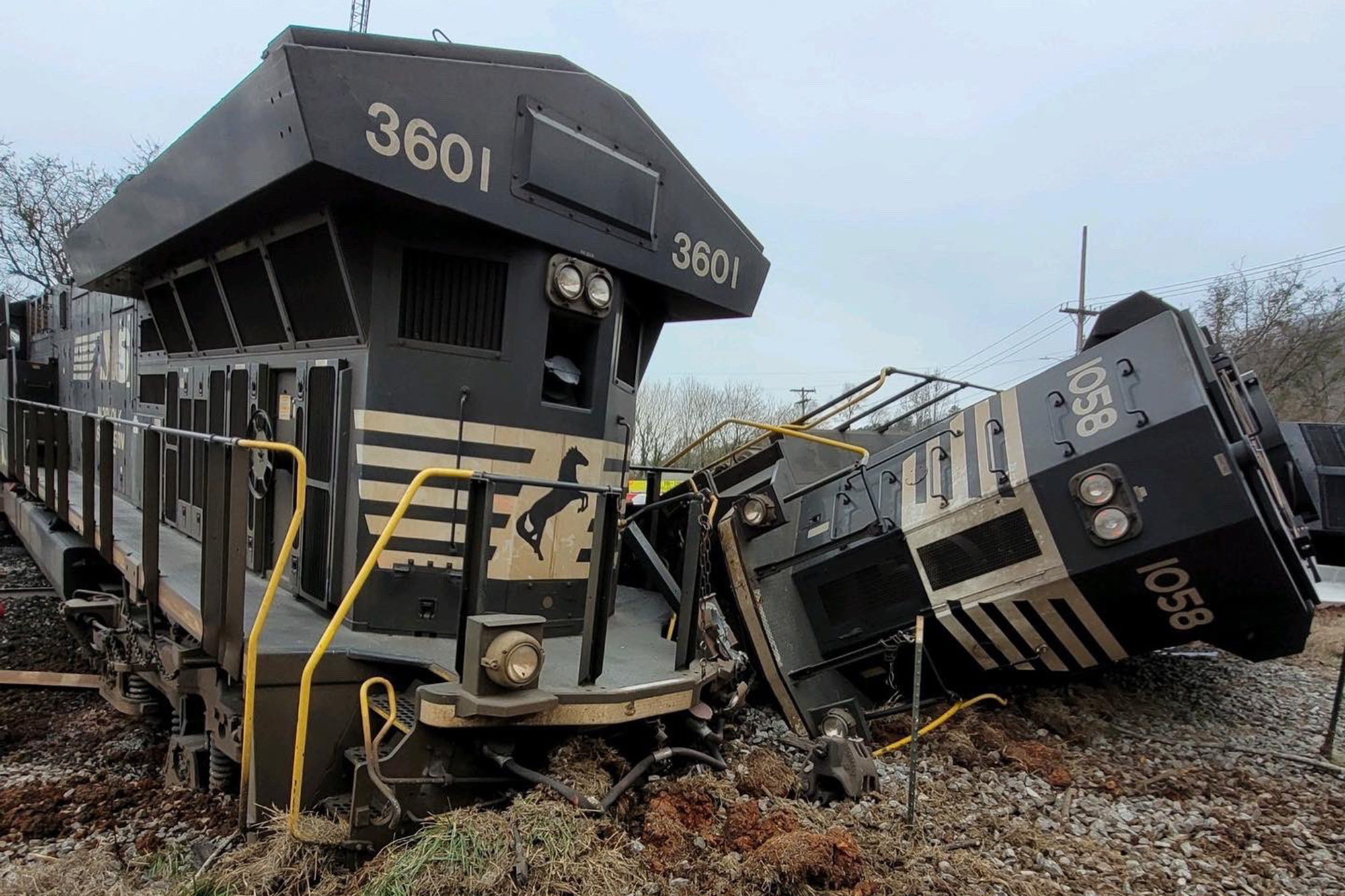Train derailment is a critical issue that affects rail transport safety and efficiency globally. These incidents can lead to devastating consequences, including loss of life, injuries, and significant financial losses. Understanding the factors that contribute to train derailments is essential for improving safety measures and preventing future occurrences. This article delves into the various causes of train derailment, their impact, and the strategies in place to mitigate risks.
In recent years, the frequency of train derailments has raised concerns among transportation authorities and the public alike. With the growth of rail networks and increasing cargo transport, ensuring the safety of trains has become more critical than ever. By analyzing past incidents, we can gain insights into the underlying issues and improve safety protocols.
This comprehensive guide will cover the various aspects of train derailments, including their causes, historical incidents, technological advancements in monitoring systems, and best practices for prevention. Whether you are a rail industry professional, a commuter, or simply interested in transportation safety, this article aims to provide valuable information on this important topic.
Table of Contents
- 1. Causes of Train Derailment
- 2. Historical Incidents of Train Derailment
- 3. Impact of Train Derailment
- 4. Technological Monitoring Systems
- 5. Best Practices for Prevention
- 6. Government Regulations and Standards
- 7. Case Studies of Successful Prevention
- 8. Future Trends in Rail Safety
1. Causes of Train Derailment
Train derailments can be attributed to various factors. Understanding these causes is crucial for developing effective prevention strategies. Here are some of the primary causes:
- Track Issues: Poorly maintained tracks, track misalignment, or broken rails can lead to derailments.
- Human Error: Mistakes made by train operators or maintenance personnel can contribute to accidents.
- Mechanical Failures: Malfunctions in the train's braking or wheel systems can result in derailment.
- Environmental Factors: Heavy rains, landslides, or ice accumulation can compromise track integrity.
- Obstructions: Objects on the tracks, such as debris or animals, can cause trains to derail.
Track Issues
Regular maintenance and inspections are vital to ensuring track safety. Any neglect can lead to significant issues that increase the likelihood of derailment.
Human Error
Training and adherence to protocols are necessary to minimize human error's impact on train operations. Ensuring that all staff are well-trained and aware of emergency procedures is critical.
2. Historical Incidents of Train Derailment
Throughout history, several notable train derailments have significantly impacted public perception and safety regulations. Here are a few key incidents:
- The Great Train Wreck of 1913: Occurred in the United States, resulting in 95 fatalities.
- 2013 Santiago Train Derailment: A high-speed train derailed in Spain, killing 79 people.
- 2016 Hoboken Terminal Train Accident: A commuter train crashed into the station in New Jersey, resulting in one death and over 100 injuries.
3. Impact of Train Derailment
The consequences of train derailments extend beyond immediate loss of life and injuries. The impact can be felt in various dimensions, including:
- Economic Costs: Derailments result in significant financial losses for rail companies, including repair costs and compensation for victims.
- Environmental Damage: Spills from cargo can lead to severe environmental consequences, impacting ecosystems.
- Public Trust: Frequent derailments can erode public confidence in rail transportation safety.
4. Technological Monitoring Systems
Advancements in technology have led to the development of various monitoring systems aimed at preventing train derailments. Key technologies include:
- Track Monitoring Sensors: These sensors detect track conditions in real-time, alerting maintenance teams to potential issues.
- Automated Train Control Systems: These systems help manage train speed and braking, reducing the likelihood of accidents.
- Data Analytics: Analyzing historical data can identify patterns that lead to derailments, enabling proactive measures.
5. Best Practices for Prevention
Implementing best practices is critical for preventing train derailments. Some effective strategies include:
- Regular Maintenance: Conducting routine inspections and maintenance on tracks and trains.
- Employee Training: Ensuring all personnel receive thorough training on safety protocols and emergency procedures.
- Public Awareness Campaigns: Educating the public about the dangers of railroads and the importance of safety.
6. Government Regulations and Standards
Governments worldwide have established regulations to enhance rail safety. These regulations often include:
- Mandatory Inspections: Governments require regular inspections of train tracks and equipment.
- Safety Standards: Establishing standards for train operations and maintenance practices.
- Reporting Requirements: Mandating train companies to report derailments and near-misses to authorities.
7. Case Studies of Successful Prevention
Several rail companies and regions have successfully implemented measures that significantly reduced derailments. Notable examples include:
- Germany's Integrated Safety System: A comprehensive approach that combines technology and human oversight.
- Japan's Shinkansen: Known for its safety record, attributed to strict maintenance and advanced technology.
8. Future Trends in Rail Safety
The future of rail safety is likely to see further integration of technology and data analytics. Emerging trends include:
- Artificial Intelligence: Utilizing AI to predict and prevent potential derailments through data analysis.
- Smart Tracks: Development of smart track systems that can self-monitor and report conditions.
Conclusion
Train derailment is a complex issue that requires a multifaceted approach to prevent. By understanding the causes, impacts, and measures for prevention, we can work towards a safer rail transport system. It is crucial for industry stakeholders, government bodies, and the public to collaborate in enhancing safety standards. We encourage readers to share their thoughts on train safety in the comments section below and explore more articles on transportation safety.
Final Thoughts
As we continue to advance in technology and safety protocols, it is essential to remain vigilant and proactive in preventing train derailments. We invite you to return to our site for more insights and updates on transportation safety.



